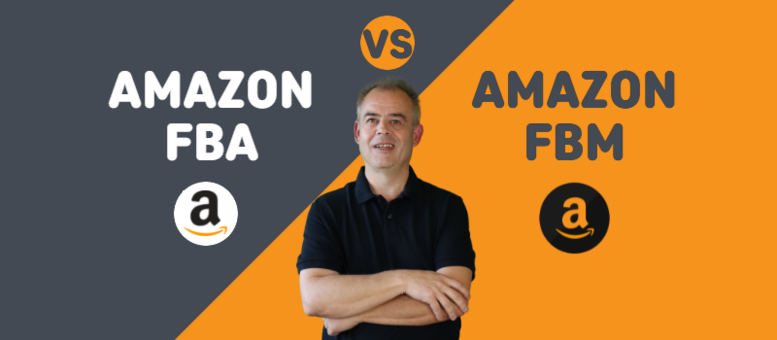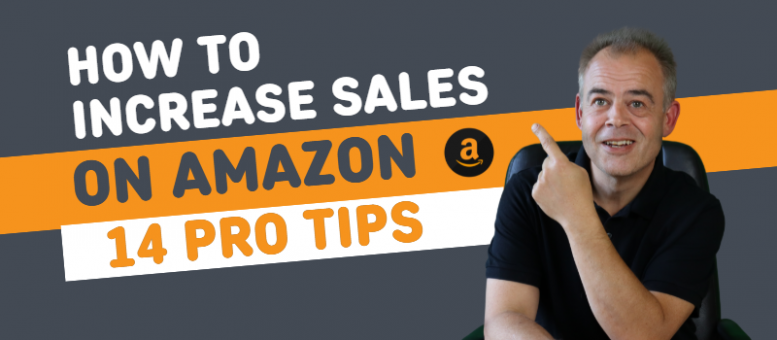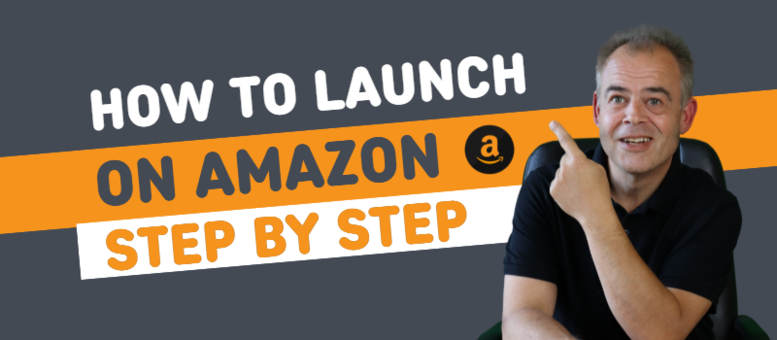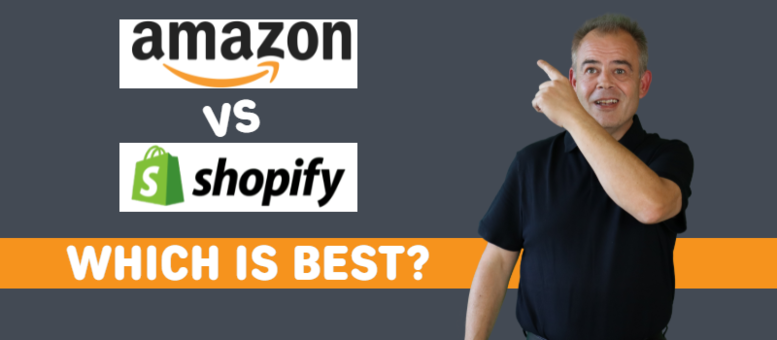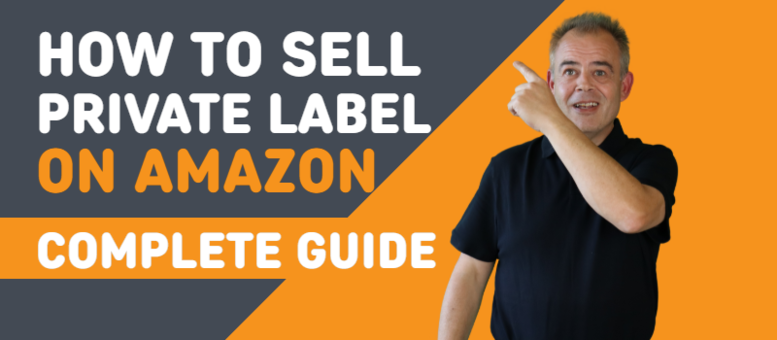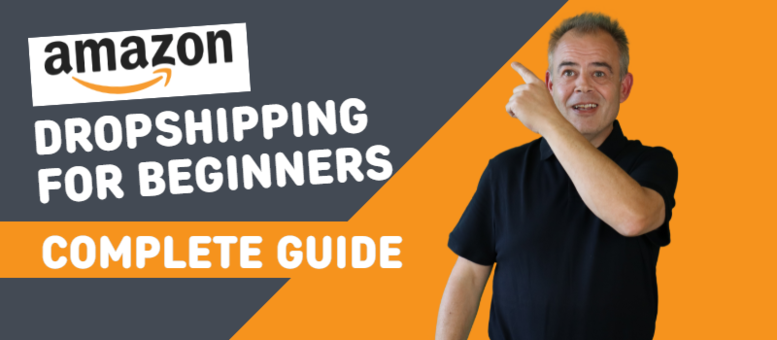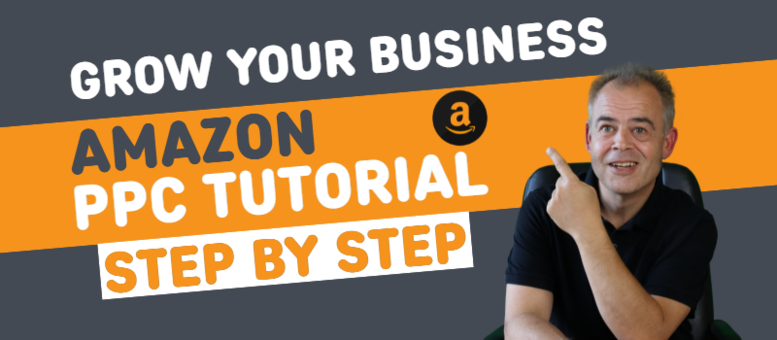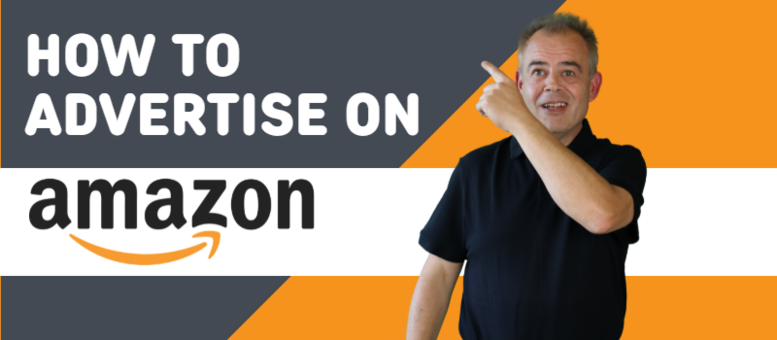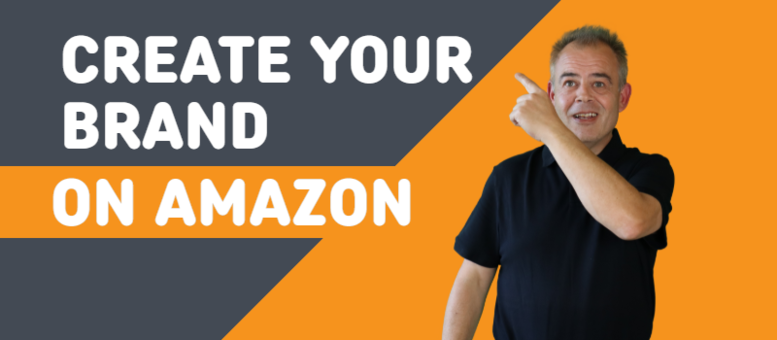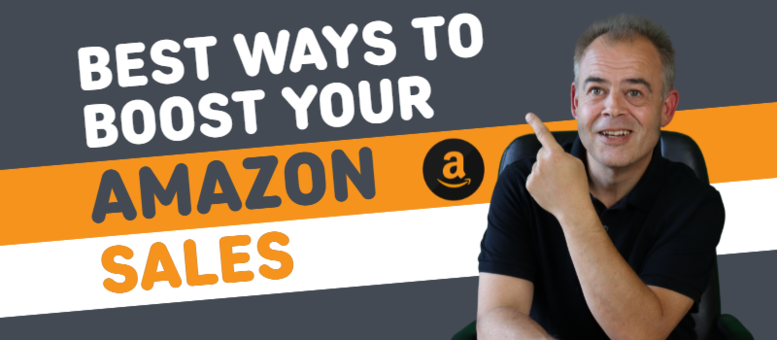What's the different between FBA and FBM? Which one should you choose to get into? What are the Pros of FBA vs FBM? What are the Cons? We're breaking down all of this and more in today's video.
Do you want to know how Amazon FBA works and how to make money from it in 2021?
Join the FREE Amazon FBA Training & Learn How To Make A Full-Time Income Online:https://bizwebjournal.com/amazontraining
If you're looking to start a business selling products on Amazon, then you'll need to know and understand the product listing criteria and how to rank on Amazon FBA. Yes, you can start making money selling on Amazon, regardless of your experience selling online.
Amazon is one of the best opportunities to make a passive income and earn money from anywhere in the world. Gone are the days of directly exchanging your time for money. That's the old model. The new model leverages the incredible opportunity that the internet affords us.
Whether you want to make money working from home, or just want a side hustle, understanding how much it costs to start selling on Amazon will give you the upward momentum you need to launch your Amazon private label business today!
The best part about selling on Amazon is that the retail giant does all the work for you. You'll never have to pick or pack or ship a product, ever. Gone are the days of dealing with fulfillment or customer service requests. Amazon does it all for you. All you do is collect the income.
But in order to get there, you need to get on the road to building your Amazon FBA business today. Tune into the video now to discover just how powerful of a passive income machine Amazon can be and how you can start making money from it no matter where you live in the world!
FBA vs FBM - What's The Difference & Which Is Best To Sell On Amazon? - Audio file
FBA vs FBM - What's The Difference & Which Is Best To Sell On Amazon? - Video transcript
Hey guys and welcome back to my channel. Today I would like to go over the differences between FBA versus FBM , so be sure to watch all the way through so you don't miss any of the important details as we do have a lot to cover.
Now, before I hop into this video, if you are new to this channel you're going to want to subscribe as I talk about the best ways to make a full time income with Amazon FBA and always get straight to the point.
So please consider subscribing and turning on your post notifications if you like channels that don’t waste your valuable time, with that said let's get right into this video.
Now, fulfillment is a vital part of running an e-commerce business. Today, shoppers want their orders to arrive as soon as possible. If you can’t offer that, then customers are going to go somewhere that does.
It’s a big reason that Amazon is on top of the e-commerce world in 2021. Fast, free shipping is the number 1 reason that 79.8% of consumers say they shop on Amazon.
Amazon sellers can choose from two fulfillment methods, FBA and FBM. Getting it right is a must, as you don’t want to be offering slower, more expensive shipping than your competitors.
So what is FBA? FBA stands for Fulfilled By Amazon. When a lot of people think about selling on Amazon, Amazon FBA comes to mind. With FBA, you let Amazon pick, pack and ship orders.
Amazon also handles customer service and returns, and any other tasks related to shipping. This system allows Amazon sellers to take their hands off a big part of the business, and focus on other areas.
With fulfillment by Amazon, you’ll ship products directly to Amazon’s fulfillment centers. There they’ll be stored, and Amazon will pack and ship inventory when necessary.
So how much does FBA cost? There are two types of fees you’ll be charged with FBA, fulfillment fees and storage fees.
Fulfillment fees cover picking and packing orders, shipping and handling, customer service and product returns. Fees are charged per unit, based on size and weight.
Storage fees are charged monthly, per cubic foot your items are taking up. The prices are different depending on the time of the year as storage fees go up closer to the holiday season.
There are a few additional fees for fulfillment by Amazon, including long-term storage fees for stock that has been in fulfillment centers for more than 365 days.
Removal order fees if you need to take any of your items out of circulation. Returns processing fees for orders where Amazon offers the customer free returns shipping and unplanned service fees if your inventory isn’t properly labeled or prepared when it comes to the fulfillment center.
Now, what is FBM? FBM means Fulfilled By Merchant. With this method, you’re required to store, pack and ship products yourself. Most of the time, you don’t actually do this yourself, instead FBM sellers work with a third-party logistics company to manage supply chain.
Listing and selling a product with FBM is mostly the same as FBA. You set up product listings the same way, you only choose a different fulfillment method. With Fulfillment By Merchant, once orders come through, you’re responsible for making sure orders go out to customers.
The only Amazon fees fulfillment by merchant are the base Amazon seller fees. You will still have to pay for storage and shipping. But you can likely find cheaper alternatives to FBA with third-party fulfillment centers.
Now, how do you list a product with FBM. Listing on Amazon for FBM is simple, and you can even change the shipping method at any time.
The listing process for FBM is largely the same. The only difference in your listing details is where you stipulate how the product is to be shipped. “I want to ship this item myself” or “I want Amazon to ship & provide customer service for my items”. There’s a simple checkbox for you to choose either FBA or FBM.
Once you’ve set your product to merchant-fulfilled, you’ll go to the “Manage Orders” screen in Seller Central to view your orders and confirm when they’re sent out.
To sell with FBM, you’ll need access to your stock and the ability to arrange fulfillment of it yourself obviously. So consider this if you’re switching over from FBA.
Now, let’s go over the Advantages of FBA. If you are struggling to decide between Amazon FBA versus FBM? Here are some of the biggest advantages for Amazon FBA sellers.
First we have guaranteed Amazon Prime shipping. Amazon Prime is a big reason for many people to shop on Amazon. In fact, 7% of Prime members buy something online daily, or almost every day.
This means it’s a huge plus to have the Amazon Prime badge on your listing. When customers know they can get fast, free shipping from Amazon, they’re more likely to buy, especially compared to a product that charges extra for shipping.
FBA sellers get more clicks to the listing from the Amazon Prime badge in search results, and a higher conversion rate as well.
The second pro of FBA is it’s easier to win the Buy Box; The Buy Box is incredibly important for Amazon sellers. It’s the section on the side of the page with the “Add to Cart” button. Without the Buy Box, customers have to click the “buy from other sellers” link to buy from you.
Almost all of the sales on Amazon come through the Buy Box. So, if you lose the Buy Box to someone else, you lose most of your sales.
Amazon generally gives preference to sellers who use FBA when deciding who has the Buy Box. This is because Amazon is confident they can ship products on time and with no problems, while merchant fulfilled products are more of a mystery.
FBA products also make more money for Amazon, so it makes sense that they would want to push people to buy from FBA instead of FBM.
Another advantage of using FBA is that there is less management required; FBA takes a lot of work off your plate. Most Amazon sellers know how many little tasks it takes to keep your business operating.
Managing and shipping orders, as well as handling customer service and returns related to fulfillment, likely requires a full-time staff member. You can save on this by using FBA, giving you or your team more time to focus on other areas of your business.
With FBA you will also have nearly infinite storage. Storage space is not an issue with Amazon FBA, as Amazon has massive fulfillment centers all over the US and the world, if you’re an international seller.
If you’re storing your stock at home, you’ll only have so much space to put everything, limiting the volume you’re able to sell. With an independent fulfillment center, you have more space. However, these centers are not close to what Amazon offers you.
The last pro of FBA I want to mention is it’s location independent. FBA lets you run an e-commerce business from anywhere in the world. Many entrepreneurs have been able to start up and run their business without needing to be in a specific location, thanks to FBA.
This opens the door for much more flexible business models and better lifestyles than being tied down to one place.
Now, FBA doesn’t work for everyone, and every situation. Fulfillment by Merchant or FBM has certain advantages too. Let’s look at the advantages for Amazon FBM sellers.
First, you will have lower fees. All the benefits of Amazon FBA come at a cost. FBA fees are not cheap, and cut into your margins significantly. You can save quite a bit by handling this yourself, or working with a cheaper third-party facility.
Saving on fulfillment and storage fees not only puts more money in your pocket from each sale, it can allow you to price your products lower than your competitors and increase sales velocity.
With FBM you also get hands-on ability. Fulfillment by Merchant allows you to take full control of your orders. This can allow you to go above and beyond with your customer service.
FBM sellers can personally ensure that orders are correct, while FBA requires you to trust Amazon to give your customers the experience they expect.
FBM sellers can also add freebies and put together custom orders for customers, and cater to special requests. Better, more personal service is a great way for Amazon sellers to get more positive reviews.
It’s also easier to take products out of circulation and inspect them if customers complain of quality issues or defects. Fulfillment by Amazon requires you to create a removal order and have all stock pulled out of circulation in Amazon’s fulfillment centers.
FBM is also better for slow-moving, big or heavy products. Amazon FBA fees are especially harsh for certain types of products. If your products are large, heavy, or likely to be in Amazon’s fulfillment centers for a long time, it’s going to get really expensive.
Fulfillment by Merchant makes more sense for products like these oversize items, heavy items, or products you’re just not sure will sell a lot. You’ll save a lot on storage, particularly long-term storage fees, allowing you to make much better profits and price competitively.
FBM is also cheaper for multi-channel fulfillment. FBA sellers can fulfill orders from non-Amazon sales channels, such as your own site or marketplaces like eBay or Walmart, with multi channel fulfillment. However, this is quite expensive, and not ideal if you’re moving a lot of product on other channels.
If you’re selling a lot of stock on different sites, it simplifies your workflow and cuts down costs if you manage all your fulfillment with a third party logistics partner . In this case, FBM works better, as you don’t need to worry about juggling multiple warehouses full of stock.
Now, you don’t necessarily need to choose either FBA or FBM. You can use both. In a report surveying over 1000 Amazon sellers, 66% used FBA to fulfill orders, and 6% used FBM. 29% used both FBM and FBA however.
These days, it makes a lot of sense to diversify, and have a plan B. Utilizing both FBA and FBM does that for you. March and April in 2020 was an example of why diversification is important. For most businesses I’d recommend using FBA, as you can offer faster shipping this way.
However, during the start of the pandemic, Amazon was unable to handle orders as they usually do, which resulted in slower shipping times and inventory limits for restocking.
For a while, Amazon switched preference for the Buy Box to FBM sellers, as they could not keep up with all FBA orders. In this situation, access to fulfillment by Merchant meant you could continue offering 1 week shipping, and take sales away from competing FBA sellers.
Whether or not this situation will happen again in the future is unknown, but it’s just one example where diversification can save your business.
You may not want to keep stock with a third party at all times. But you can scout potential providers and do a test run with them, so you’re confident you’ll be able to switch over to FBM if there is ever any trouble from Amazon.
The best fulfillment method for Amazon comes down to your own situation. The answer will likely differ from seller to seller. Amazon FBA is the best if all or most of your sales come from Amazon, and you’re selling regular-sized, fast-moving products.
The lower workload for FBA sellers is extremely valuable. This allows you to put more focus on other areas of your business, and operate with a smaller team.
You’re also likely to sell more with FBA, as you can offer the benefits of Amazon Prime shipping, and you’re more likely to rank higher and control the Buy Box.
Now, before we move on and talk about the pros of FBM. As you can see, there are a lot of steps involved in building an Amazon business. And I wouldn't recommend piecing together everything by simply watching videos on YouTube. This is why I suggest investing your time in a great free training that can guide you through this process.
I recommend this training because this is the best training on the market and one that I have personally gone through. They walk you through every aspect of what it takes to start, grow and scale your Amazon business.
This training will build off of what I talk about inside my videos so I left a link for you in the description and if you're serious about selling on Amazon I encourage you to check it out!
Now, let’s go over the pros of FBM. FBM is the best if your sales are slower or less predictable, if you have oversized or heavier products, or if you’re selling a lot on other channels. In many cases, FBM sellers are able to save a lot on fees by finding a cheaper logistics partner, or even by managing orders yourself.
Consider moving to FBM if you expect stock to be sitting unsold for a while, or you have the kind of products that cost a lot to store and ship.
Additionally, if you get a lot of orders outside Amazon, it will be easier and cheaper to manage all your orders from one fulfillment partner, rather than sending stock to many different places.
If you sell with FBM, try to find a logistics partner that offers Seller Fulfilled Prime, as you’ll get more conversions if you can offer the Prime badge on your listing.
Now, if you’re on the fence between FBA or FBM, or just starting your business, choose FBA. However, consider using both, so you have one channel as a fallback in case the other has problems. If you don’t want to keep stock in both FBA and FBM at the same time, at least have a plan to be able to switch over, if necessary.
Fulfilling orders correctly, safely and on time is the most important part of selling online. Mess this up, and you’re going to get returns, bad reviews, and low account health metrics. That’s why deciding on FBA versus FBM is such an important decision for Amazon sellers.
If you want to rank high, maximize your sales and conversion rate, and keep your customers happy, make sure you choose the right fulfillment method.
Fulfillment by Amazon will help you win the Buy Box, and let you offer fast, free shipping with Amazon Prime. While fulfillment by Merchant allows you to sell with fewer fees, and a more personal touch than many other Amazon sellers. FBA or FBM, the right decision will help you build a better and more profitable Amazon business.
Thanks for watching and please make sure to watch the next videos with more Amazon FBA tips that will show up right about now.

